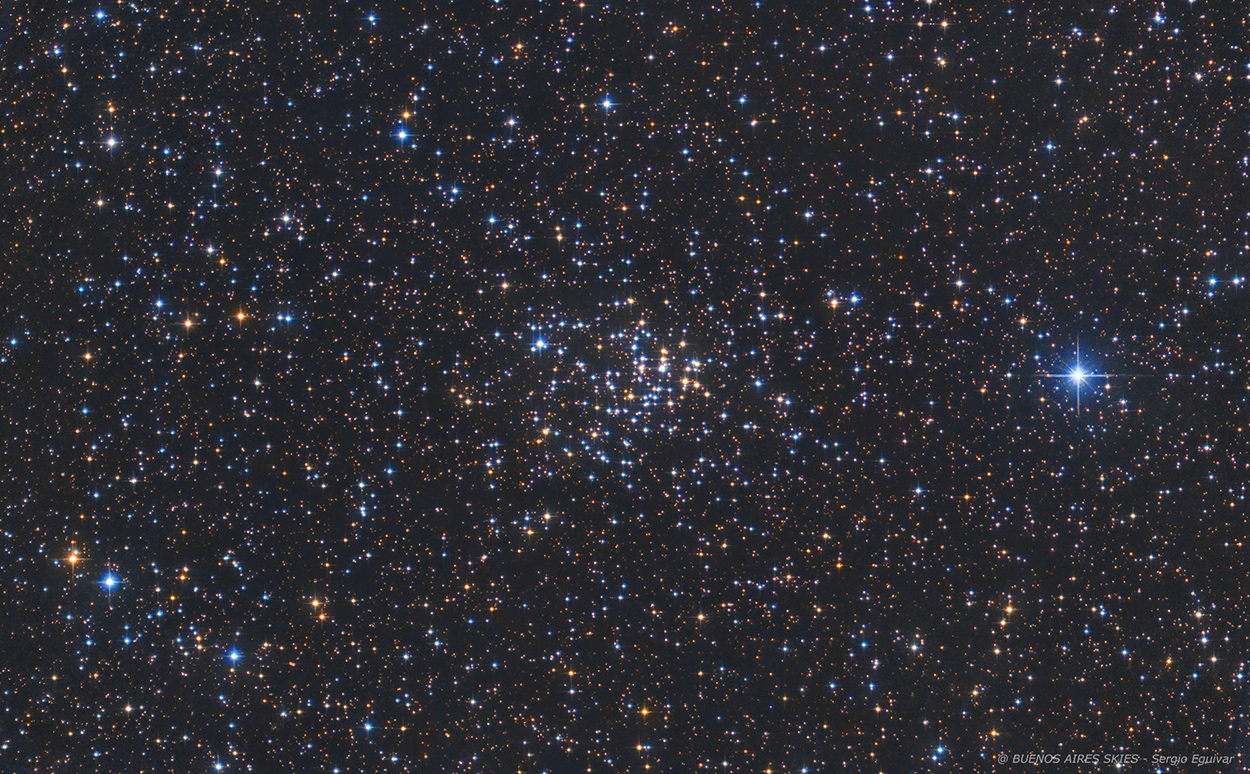
0222222222222222222222222222222222222222222222222222222.
| HOME |
NGC 2360 (aka Caroline's Cluster & Caldwell 58)
OPEN CLUSTER IN CANIS MAYOR
(ra: 07h 18' 21"/ dec -15º 40')
CLICK THE IMAGE FOR A HIGH RESOLUTION VIEW
April 2025, Home Backyard in Martinez, Buenos Aires, Argentina
DATA
TYPE: Open Cluster
Visual Brightness: 7.2
APPARENT DIAMETER: 13 arc minutes
DISTANCE: 3700 light years
IMAGE INFORMATION
SCOPE: 6" ORION OPTICS UK (Ultra Grade Optics) w/Sky Watcher Coma Corrector (0.9x) working at at f4.5
CAMERA: QHY 183 MONO
MOUNT: KYWATCHER NEQ6, OAG with QHY 5II Mono
FILTERS: OPTOLONG LRGB Set
SKY CONDITIONS: Urban Skies, half Moon
EXPOSURES: LRGB (45,45,45,45) - all channels bin 1x1
OBJECT DESCRIPTION AND IMAGE SESSION
Caroline Herschel discovered this Open Cluster on February 26 1763 and included in her list as number 2. NGC 2360 was her first original discovery of a deep sky object who described it as a "beautiful cluster of pretty compressed stars near 1/2 degree in diameter". Her brother William included it in his catalog. The cluster contains roughly 80 stars, mostly of them relatively faint. The cluster lies 3.5 degrees east of Gamma Canis Majoris and less than one degree northwest of the eclipsing binary star R Canis Majoris. It has a combined apparent magnitude of 7.2 and 13 arc minutes in diameter. Visible at the right is the unrelated star, 5.5 magnitude HD 56405.
Swiss astronomers Jean-Claude Mermilliod and Michel Mayor were able to date the age of the cluster at 2.2 billion years. The cluster has a diameter of around 15 light-years and is located 3700 light-years from Earth